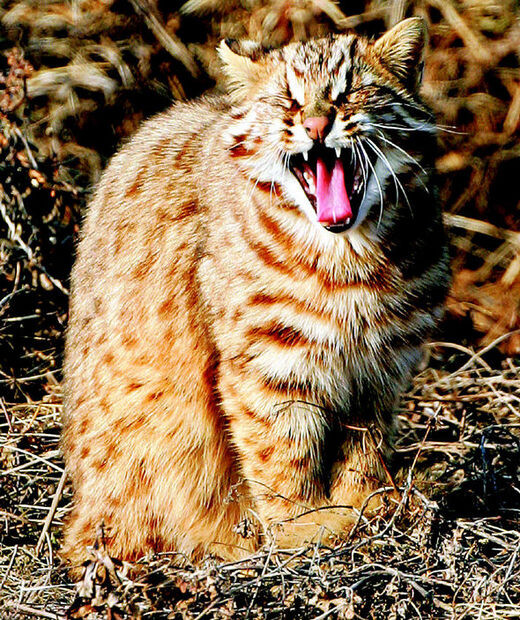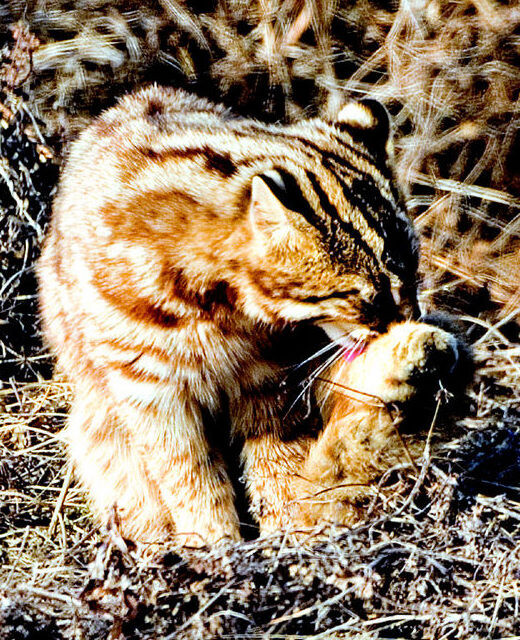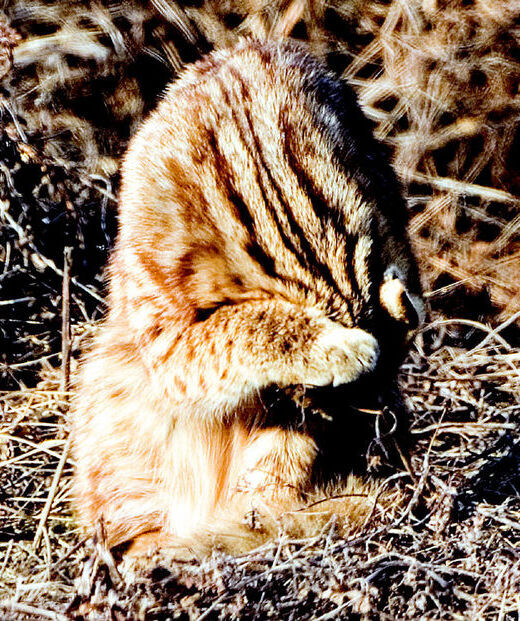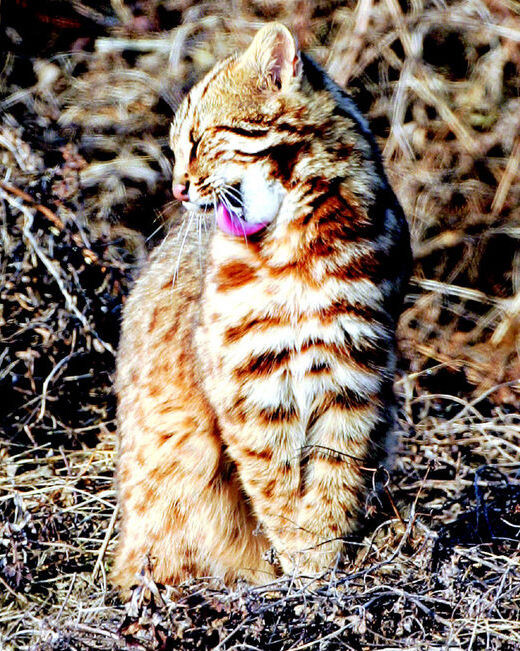hankyoreh
Links to other country sites 다른 나라 사이트 링크
Scarce feline makes a brief appearance

In a broad, reedy field in Paju, Gyeonggi Province, a flock of birds soared around peacefully. In the underbrush, concealed, was a wildcat, Felis bengalensis manchurica Mori, keeping a low profile and fixing its eyes on its prey. But the cat slinked back into the wilderness after several failed attempts to capture a bird in its jaws.

In mid-December, the Hankyoreh visited the field. But it would be a month later before a reporter, hidden in the wetlands, caught sight of the wildcat, an endangered species. It had come out into the open to enjoy the unseasonably warm winter sunshine in early Janunary. It was grooming its yellow-brown fur as if it had just awoken from a long sleep.

The wildcat, designated an endangered species by the Ministry of the Environment, is at the top of the feline food chain in South Korea’s ecosystem, as the tiger, lynx, and leopard have all disappeared. The wildcat looks like an ordinary housecat but has gone through quite a different evolutionary process, making it appear somewhere between a domestic cat and a tiger.

The wildcat was easily spotted before the Korean War. But destruction of its habitat during the war and in the rapid industrialization that followed decates later, along with government-led efforts to root out rats, their main prey, during the 1960s-70s, led to a sharp decrease in the wildcat population.

"The fact that the predatory wild cat survives here means that the ecosystem in this wetland remains healthy," an environmental expert said, adding that measures should be taken to protect the habitat of the endangered animal.
Please direct questions or comments to [englishhani@hani.co.kr]
Editorial・opinion
![[Guest essay] Maybe Korea’s rapid population decline is an opportunity, not a crisis [Guest essay] Maybe Korea’s rapid population decline is an opportunity, not a crisis](https://flexible.img.hani.co.kr/flexible/normal/500/300/imgdb/original/2024/0430/9417144634983596.jpg) [Guest essay] Maybe Korea’s rapid population decline is an opportunity, not a crisis
[Guest essay] Maybe Korea’s rapid population decline is an opportunity, not a crisis![[Column] Can Yoon steer diplomacy with Russia, China back on track? [Column] Can Yoon steer diplomacy with Russia, China back on track?](https://flexible.img.hani.co.kr/flexible/normal/500/300/imgdb/original/2024/0430/1617144616798244.jpg) [Column] Can Yoon steer diplomacy with Russia, China back on track?
[Column] Can Yoon steer diplomacy with Russia, China back on track?- [Column] Season 2 of special prosecutor probe may be coming to Korea soon
- [Column] Park Geun-hye déjà vu in Yoon Suk-yeol
- [Editorial] New weight of N. Korea’s nuclear threats makes dialogue all the more urgent
- [Guest essay] The real reason Korea’s new right wants to dub Rhee a founding father
- [Column] ‘Choson’: Is it time we start referring to N. Korea in its own terms?
- [Editorial] Japan’s rewriting of history with Korea has gone too far
- [Column] The president’s questionable capacity for dialogue
- [Column] Are chaebol firms just pizza pies for families to divvy up as they please?
Most viewed articles
- 1Under conservative chief, Korea’s TRC brands teenage wartime massacre victims as traitors
- 2[Guest essay] Maybe Korea’s rapid population decline is an opportunity, not a crisis
- 3Value of Korean won down 7.3% in 2024, a steeper plunge than during 2008 crisis
- 4[Column] Can Yoon steer diplomacy with Russia, China back on track?
- 5Two factors that’ll decide if Korea’s economy keeps on its upward trend
- 6First meeting between Yoon, Lee in 2 years ends without compromise or agreement
- 7Months and months of overdue wages are pushing migrant workers in Korea into debt
- 8‘We must say no’: Seoul defense chief on Korean, USFK involvement in hypothetical Taiwan crisis
- 9After election rout, Yoon’s left with 3 choices for dealing with the opposition
- 10Why Kim Jong-un is scrapping the term ‘Day of the Sun’ and toning down fanfare for predecessors